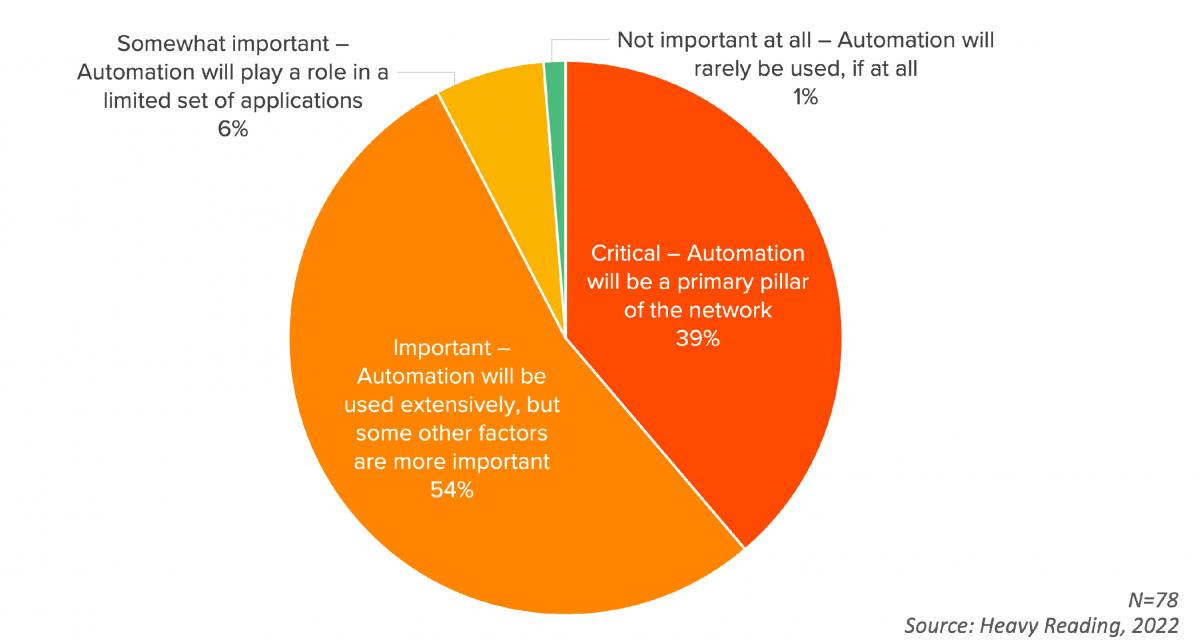Teresa Monteiro reveals why there is more to open networking than physical device interoperability
Optical networks are increasingly moving away from closed systems, where all elements are provided by a single equipment supplier, toward open environments based on multi-vendor interworking of devices.
The most common approach to optical disaggregation is separating the optical engines (transponders or coherent optical pluggables) from the line system, i.e. running optical signals from one or multiple suppliers over a line system from a different supplier. In a competitive environment where vendors continue bringing best-in-class optical engines to market, disaggregation enables operators to introduce innovation into their networks faster.
Open networking also offers access to a wider choice of solutions and reduces the risk of supply chain and quality issues. The results are better network economics and business continuity, leading to increased competitiveness. And operators recognise its value: a recent operator survey found that half of respondents already deploy open line systems with disaggregated transponders or plan to do so during 2023.
But while operators are eager to disaggregate their networks, they need to continue to operate them in a holistic manner. There is more to open networking than physical device interoperability – open networking requires a vendor-agnostic management and control system that acts as the glue for disaggregated networks.
Operators are more aware than ever of the role played by automation in network evolution – the same report shows 93% consider automation to be critical or important to their success.

Figure 1: How important is automation for your next-generation transport network strategy?
This article discusses how software and automation help maintain the operational experience of a closed network as operators open up their networks and deploy a variety of coherent optics from diverse suppliers over any line system. It also highlights how automation might change the way we think about networking.
Setting the foundations for effective open networking
An open optical network demands a control system able to interface all its multi-vendor elements in a uniform manner; understand topology, connectivity, and status; and manage services from end to end. Such software relies on the existence of a reference control architecture as well as on standardised open APIs and data models, which are the frameworks that standards bodies and industry organisations have been developing to enable wide adoption of open networking. They include:
- ONFs SDN Architecture for Transport Networks, IETF’s Framework for Abstraction and Control of TE Networks (ACTN), and IETF’s framework for service automation, which define the basis for a hierarchical control architecture of open transport networks.
- ONF TAPI, which is establishing itself as the leading standard API at the northbound interface (NBI) of optical network controllers, consolidating and abstracting the optical layer toward the hierarchical controller and allowing automation applications to act on the network.
- OpenConfig, which is becoming the predominant choice for the API between optical engines and optical controllers. OpenConfig YANG data models provide well-defined, consistent ways to manage transceivers across vendors and to collect the sea of data they expose.
This body of work establishes the foundations of effective open optical networking. Additionally, entities like OIF and TIP OOPT are strong contributors to the advancement of open networking. These community-driven organisations prioritise key use cases and define requirements for interoperability. As an example, TIP recently awarded Infinera’s GX G42 a Bronze Badge for open API compliance. These organisations also conduct multi-vendor interoperability tests, bringing together technology partners, demonstrating compliance of products, and ultimately increasing confidence in open networking.
Coherent optics migration and open networking
A parallel aspect of open optical networking gaining traction is IP over DWDM and the migration of coherent optics to pluggables hosted in non-traditional optical transport platforms – routers, switches, servers, even radio units. New challenges arise in the operation of these networks, and again, software controllers are key to overcome them. The goal is once more seamless and uniform operation of the underlying networks, regardless of the platform in which the pluggables are equipped.
One important topic concerns the control architecture of IPoDWDM. Should the management of coherent optical pluggables fall under the optical controller, is it subsumed by the IP controller or should there be a dual management approach?
Also, as coherent pluggables become full systems on a pluggable that can expose an abundance of monitoring data and implement complex functionality, their management and interfaces need rethinking.
Again, industry initiatives come to the rescue: TIP OOPT and Open XR Forum, where suppliers of coherent optical pluggables, controllers, IP and DWDM equipment, operators and system integrators all sit at the same table, discussing these challenges and proposing ways forward.
Enabling wide-scale automation
It is well worth noting that the industry work developed in the scope of open networking also encompasses a wider vision of network automation. The frameworks mentioned above ensure not only support for multi-vendor network configuration but also include modelling of operational states, enabling rich streaming telemetry and access to multi-vendor network data by analytics applications. These data-crunching applications either based on classical algorithms or machine learning techniques, correlate data, find trends, and extract valuable and actionable network insights that allow more efficient operation and support educated decision making.
Streaming telemetry and analytics are already used today for network diagnostics, improving troubleshooting; they provide predictions that can be used to proactively prevent network problems. Eventually, streaming telemetry and analytics will offer prescriptions for true data-driven, fully automated network operation.
Software and automation solutions that implement open optical networking recommendations and standards are not just supporting the evolution to open, but also the evolution to a new networking vision.
The takeaway
While some questions remain to be fully answered on the operationalisation of open networks, the understanding of these ecosystems is increasing every day. Vendor-agnostic software and automation solutions now becoming available, based on the body of work accumulated by the industry, are not just powerful tools to overcome the operational limitations of open networking but are also solid platforms on which to build analytics applications to help plan future networks.
When it comes to open networking, operators may choose to start tactically, implement proof-of-concept trials, and then progress to small-scale deployments, while continuing to track the evolution of standards and industry advances. But now is the time to embrace open and to leverage the software solutions that not only glue open networks together but can take them to the next level.
Teresa Monteiro is director solution marketing, network software and automation, Infinera


